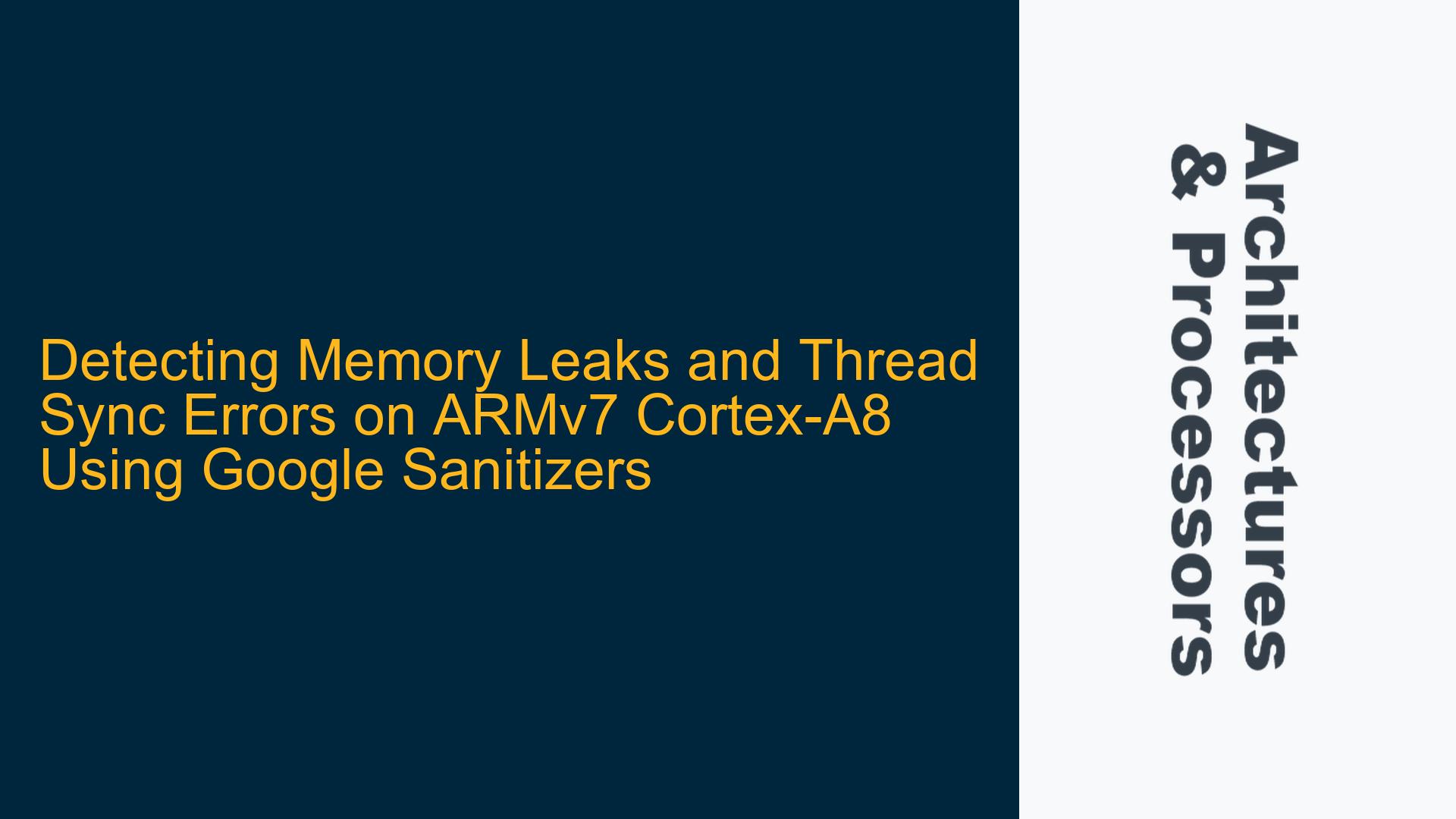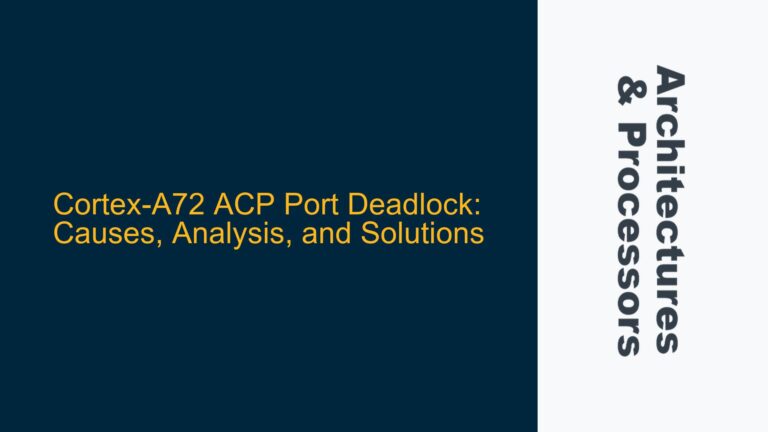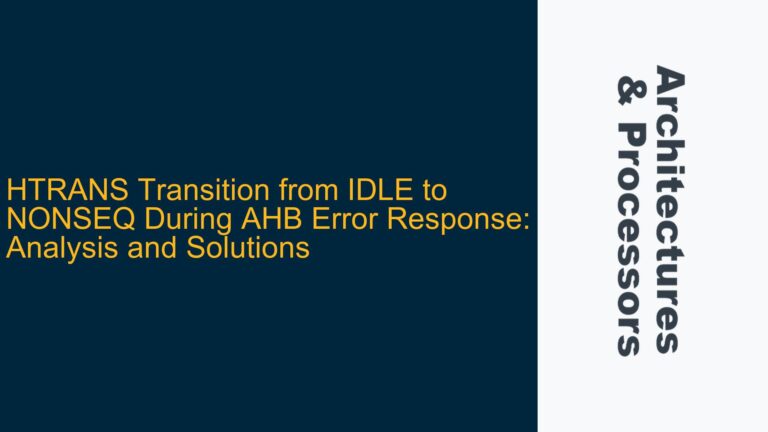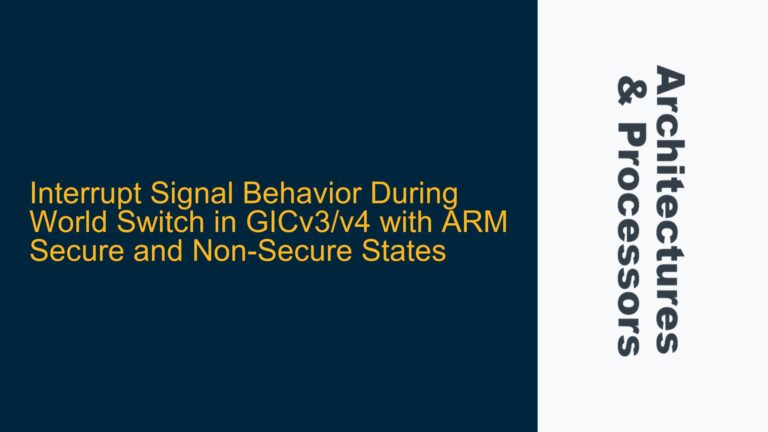ARMv7 Cortex-A8 Sanitizer Support for Memory Leak and Thread Synchronization Detection
The ARMv7 Cortex-A8 processor, a member of the ARM Cortex-A series, is widely used in embedded systems due to its balance of performance and power efficiency. However, like any complex system, software running on the Cortex-A8 can suffer from memory leaks and thread synchronization errors. These issues can be particularly challenging to diagnose in embedded environments where debugging tools are often limited. Google Sanitizers, including AddressSanitizer, MemorySanitizer, and ThreadSanitizer, are powerful tools that can help detect these issues. This guide will explore the feasibility of using Google Sanitizers on an ARMv7 Cortex-A8 platform running Linux, the potential challenges, and the steps required to implement these tools effectively.
Memory Leak and Thread Synchronization Error Detection on ARMv7 Cortex-A8
Memory leaks occur when dynamically allocated memory is not properly deallocated, leading to a gradual reduction in available memory. Thread synchronization errors, on the other hand, arise when multiple threads access shared resources without proper synchronization, leading to race conditions, deadlocks, or data corruption. Detecting these issues on an ARMv7 Cortex-A8 processor requires a tool that can monitor memory allocations and deallocations, as well as track thread interactions.
Google Sanitizers are a suite of tools designed to detect various types of software bugs. AddressSanitizer is used to detect memory errors such as buffer overflows, use-after-free, and memory leaks. MemorySanitizer detects uninitialized memory reads, while ThreadSanitizer is designed to detect data races and other thread synchronization issues. These tools work by instrumenting the code at compile time, adding checks that monitor the program’s execution and report any issues detected.
The ARMv7 Cortex-A8 processor, while not the most recent ARM architecture, is still capable of running these sanitizers, provided the toolchain and runtime environment support them. The key challenge lies in ensuring that the sanitizers are correctly integrated into the build process and that the runtime environment can support the additional overhead introduced by the instrumentation.
Challenges in Implementing Sanitizers on ARMv7 Cortex-A8
Implementing Google Sanitizers on an ARMv7 Cortex-A8 processor running Linux involves several challenges. The first challenge is ensuring that the cross-compilation toolchain supports the necessary flags and libraries for the sanitizers. The GCC toolchain version 8.3, as mentioned in the discussion, should support AddressSanitizer and ThreadSanitizer, but it is essential to verify that the specific build of the toolchain includes the required libraries and that they are compatible with the ARMv7 architecture.
Another challenge is the performance overhead introduced by the sanitizers. AddressSanitizer, for example, can significantly increase memory usage and slow down the execution of the program. This can be particularly problematic on resource-constrained embedded systems where memory and processing power are limited. Careful consideration must be given to the trade-off between the level of debugging required and the impact on system performance.
Additionally, the runtime environment must support the sanitizers. This includes having the necessary shared libraries available on the target system and ensuring that the kernel and other system components do not interfere with the sanitizers’ operation. For example, some kernel configurations may not support the memory mapping techniques used by AddressSanitizer, leading to runtime errors or incomplete coverage.
Steps to Implement Google Sanitizers on ARMv7 Cortex-A8
To implement Google Sanitizers on an ARMv7 Cortex-A8 processor running Linux, follow these steps:
-
Verify Toolchain Support: Ensure that the GCC toolchain version 8.3 or later is used, as earlier versions may not fully support the necessary sanitizer flags. Check that the toolchain includes the required libraries for AddressSanitizer, MemorySanitizer, and ThreadSanitizer. This can be done by attempting to compile a simple test program with the appropriate flags.
-
Compile with Sanitizer Flags: When compiling the application, include the appropriate sanitizer flags. For AddressSanitizer, use
-fsanitize=address. For ThreadSanitizer, use-fsanitize=thread. These flags instruct the compiler to instrument the code with the necessary checks. Note that MemorySanitizer is not typically used on ARMv7 due to its high overhead and limited support. -
Link with Sanitizer Libraries: Ensure that the application is linked with the sanitizer runtime libraries. This is usually handled automatically by the compiler when the sanitizer flags are used, but it is important to verify that the correct libraries are included in the final binary.
-
Deploy to Target System: Transfer the compiled binary to the ARMv7 Cortex-A8 target system. Ensure that the necessary shared libraries are available on the target system. This may involve copying the sanitizer runtime libraries to the target or ensuring that they are included in the root filesystem.
-
Run the Application: Execute the application on the target system. The sanitizers will monitor the program’s execution and report any issues detected. The output will typically be printed to the standard error stream, so ensure that this is captured for analysis.
-
Analyze the Results: Review the output from the sanitizers to identify any memory leaks or thread synchronization errors. AddressSanitizer will report memory leaks, buffer overflows, and use-after-free errors. ThreadSanitizer will report data races and other thread synchronization issues. Use this information to debug and fix the issues in the application.
-
Optimize and Retest: After fixing the identified issues, recompile the application with the sanitizer flags and retest to ensure that the issues have been resolved. Be mindful of the performance overhead and consider whether the sanitizers are still needed for further testing or if they can be disabled to improve performance.
By following these steps, you can effectively use Google Sanitizers to detect memory leaks and thread synchronization errors on an ARMv7 Cortex-A8 processor running Linux. While there are challenges involved, the benefits of identifying and resolving these issues early in the development process can lead to more reliable and stable embedded systems.






